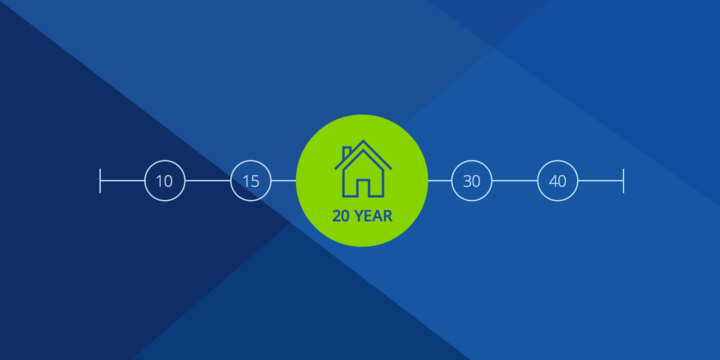11 min read
Non-Conforming Loans: Guidelines and Benefits


Written by Tali Bendzak on January 3, 2024
When you’re buying a home, there are many financing options available. The options you qualify for depend on the property you’re buying and your financial situation. One of the loan types your lender may recommend is a non-conforming loan. Here’s what you need to know.
What is a non-conforming loan?
A non-conforming loan does not meet the conforming loan criteria set by Fannie Mae and Freddie Mac. These two government-sponsored enterprises set standards based on the risk profile of certain mortgage types to streamline the mortgage process for borrowers and investors purchasing loans on the secondary market.
Many types of loans are considered non-conforming such as FHA, VA and USDA. Many non-conforming loans are designed for borrowers who may need to borrow a large amount of money (higher than Fannie Mae and Freddie Mac’s conforming loan limit) and/or those who have low credit, high debts or non-traditional income.
If you qualify for a non-conforming loan, you can expect a more rigorous underwriting review, based on the increased financial risk to your lender.
Conforming vs non-conforming loan
Conforming loans, which include most conventional loans, meet Fannie Mae and Freddie Mac criteria for risk. Conforming loans are more appealing to secondary investors, since they are harder to qualify for because of limits on how much you can borrow and the borrower’s credit profile.
Non-conforming loans are any mortgage loans that do not meet Fannie Mae and Freddie Mac requirements.
Non-conforming loan limits
One standard set by Fannie Mae and Freddie Mac is that loans can’t exceed a certain amount. Loans that exceed that amount are deemed non-conforming. In most parts of the country, the conforming loan limit is $832,750 for a one-unit property such as a single-family home, as of 2026. However, in certain high-cost areas of the country, the maximum amount you can borrow is as high as $1,249,125 for a one-unit property.
Unlike conforming loans, non-conforming loans are often used when a home buyer needs to borrow an amount higher than the conforming loan limit in their area.
So how much can you borrow with a non-conforming loan? It all depends on your creditworthiness, income and assets. But your loan amount is not capped by the government.
Qualifying for a non-conforming mortgage underwriting guidelines
Qualification criteria for non-conforming loans vary based on the loan program you select and the lender you use, but generally, these are the underwriting guidelines you’ll need to meet to get your loan approved.
Healthy credit in the high 600s
Your loan program or lender will likely dictate a minimum credit score, but generally speaking, you’ll want a score in the mid-600s or in the 700s. Borrowers with credit scores of 640 should be able to qualify for FHA or VA loans. Anything higher than the 700s is considered exceptional and you’ll be eligible for the very best mortgage rates.
If your score is under 600, check with your lender for options. Some loan programs allow you to buy a house with a credit score as low as 500.
Debt to income ratio of 43%
Most non-conforming loans require a debt-to-income ratio (DTI) of 43%, though depending on the program it can be higher. This means that your monthly debt obligations shouldn’t exceed 36% of your monthly gross income. This gives lenders peace of mind that you aren’t financially overstretched. As with other criteria, individual lenders may set their own, higher DTI standards. Use our DTI calculator to estimate your ratio.
Consistent income
To qualify for a non-conforming loan, you’ll need to show proof of consistent income. This demonstrates to lenders that you have the ability to repay your loan. Long-term employment is preferable over an inconsistent work history. Self-employed borrowers are allowed, but you’ll need to show a consistent history of earnings.
Acceptable down payment and savings
While some loan programs offer zero down payment mortgages, most non-conforming loans require a down payment. It’s considered a best practice to put 20% down to reduce your monthly payments, including mortgage insurance, but 20% down is not typically required for non-conventional loans. According to a Zillow survey, 58% of buyers put down less than 20%.
How long does it take to get a non-conforming loan?
The standard time to close on a non-conforming loan is 30-45 days. This is true of conforming loans, too. Since non-conforming loans are considered riskier to lenders, the underwriting process may end up on the longer end of this range.
To close on a non-conforming loan, you may have to provide more documentation about your income or creditworthiness. Factors like self-employment, a history of bankruptcy, prior defaulted loans or inconsistent income may also make your underwriting process take longer.
By comparison, conforming loans are often quicker to close with fewer disclosures. Thanks to a standardized underwriting process, USDA, VA and FHA loans still close in a reasonably quick timeframe.
Benefits of non-conforming loans
There are a few key benefits to taking out a non-conforming loan to buy a home.
Ability to borrow large loan amount
Because you don’t have to align with a conforming loan limit, you may be able to borrow more money with a non-conforming loan. These large mortgage loans are called jumbo loans. You must have a high enough monthly income to afford the monthly payments, but if you do, they can be a great option, especially if you live in an area with higher home prices.
NOTE: FHA and USDA still adhere to their own loan limits. VA loan limits are based on your eligibility and ability to repay the loan.
Ability to acquire a loan as a higher-risk borrower with lower credit
Conforming loans have strict qualification criteria, eliminating them as an option for many borrowers with less-than-ideal credit or large loan amounts. Non-conforming loans make homeownership possible for more people, thanks to less strict qualification criteria and first-time home buyer programs.
Your lender can help you find non-conforming loan options based on your needs. There are even specific loan programs for first-time buyers, veterans and buyers in rural areas.
Ability to acquire a loan with lower down payment requirements
Not having a sizeable down payment can prevent buyers from qualifying for conforming loans. But there are non-conforming loans designed to solve this program, including some with zero down payment requirements and others with associated down payment assistance programs.
Drawbacks of non-conforming loans
While there are many benefits to non-conforming loans, there are a few drawbacks.
More strings attached
Because the lender is assuming more risk to fund a non-conforming loan, you may have to jump through a few more hoops to secure your loan. In many cases, you may have to pay a higher interest rate, make monthly mortgage insurance payments or pay higher fees at closing. Some loan programs also require borrowers to buy in rural locations, be a military servicemember or veteran or submit to special inspections before closing.
Limited to specific property types
Many non-conforming loans are only available for purchasing your primary residence, meaning the home you will reside in the majority of the time. Second homes, vacation properties and investment properties are often specifically excluded from borrowing non-conforming loans. However, some lenders offer non-conforming jumbo loans.
Stricter or lengthier underwriting process
Unlike conforming loans where the underwriting process is standardized, when you get a non-conforming loan, the underwriting process can be longer and require you to provide additional documentation.
Limited availability
Conforming conventional loans are the most widely available loan type, since they’re low risk with a high likelihood of repayment. Not all lenders offer non-conforming loans, so you may have to shop around for a lender that offers the type of loan you need–alongside high-quality customer service and low fees. Start the process by getting pre-qualified with us at Zillow Home Loans.*
Less attractive to sellers receiving multiple offers
If you’re competing with other buyers for the same property, it’s important to note that sellers often prefer conforming loans. Because conforming loans have higher standards for creditworthiness, the seller may believe a buyer with a pre-approval for a conforming loan may be unlikely to encounter issues with financing that could make the deal fall through.
Non-conforming loan rates
Interest rates for non-conforming loans can be higher or lower than conforming loan rates, depending on your financial profile. When you’re applying for a mortgage, it’s best to get pre-qualified for both conforming and non-conforming loan types so you can compare rates, fees and terms. Your lender can help you discuss the tradeoffs based on your criteria for monthly payments and upfront costs.
Non-conforming loan terms can vary in length: 10, 15, 20 or 30 years. Shorter-term loans will require a bigger monthly payment, but interest rates are lower and you’ll pay significantly less interest over the life of the loan.
Non-conforming loans can also have a fixed interest rate or an adjustable rate. A fixed rate won’t change over the entire loan term. An adjustable-rate loan typically starts with a low introductory rate, which increases regularly once the introductory period has ended.
A buyer who qualifies for a conforming loan with at least a 20% down payment will have access to the best rates—although this can be a high bar for most first-time buyers.
Examples of non-conforming loans
There are many different types of non-conforming loans. Some are government-backed and some are not. Here are some of the most common non-conforming loans.
Government loans
Government-backed loans are insured by the federal government. This reduces risk to the lenders and makes homeownership accessible for more people. All government-backed loans are considered non-conforming. There are three types of government-backed loans, designed for different situations.
FHA loans: Popular with first-time home buyers, FHA loans require a down payment of as little as 3.5% of the purchase price with more income flexibility than other loan types. These loans, which are insured by the Federal Housing Administration, require a credit score of at least 580. Borrowers with lower credit scores may still be eligible, with a larger down payment.
VA loans: These loans are designed for qualified active-duty military members, veterans and their spouses. VA loans are available with zero down payment, as long as you have a credit score of at least 620. In addition to not requiring a down payment, the other benefit of VA loans is that they often offer lower interest rates than other loan programs. If you qualify for both VA and conforming loans, the VA loan will still likely be the better deal for you.
USDA loans: For buyers in rural areas with low to moderate income, USDA loans are a good option. This loan program is designed to encourage rural housing development, and zero down payment options are available. You’ll need a credit score of 640 to qualify.
Some conventional loans
Conventional loans are non-government-backed loans. Most conventional loans are also conforming, but some are not. Conventional loans require a minimum credit score of between 620 and 660, with the best rates going to those with scores of 720 or higher. Other qualification requirements include a down payment of at least 3% (with PMI) and a debt-to-income ratio of no more than 45%.
The most common example of a non-conforming conventional loan is a jumbo loan. As the name implies, jumbo loans exceed the conforming loan limits set by Fannie Mae and Freddie Mac. They’re designed for people buying high-end properties or homes in expensive housing markets. Because of the amount borrowed, lenders consider these loans riskier. That means you’ll need a credit score of 720 or higher, a sizable down payment and proof of cash reserves. You may also pay a higher interest rate.
Other non-conforming loans
Other types of non-conforming loans are sometimes available, but these tend to be riskier private loans with few or no protections for borrowers. Always explore all your options with your lender before exploring one of these non-traditional loan options.
Interest only
Interest-only loans allow you to make payments only on the interest portion of the loan for a set period of time, giving you lower monthly payments for five to 10 years. After that period expires, loan payments increase to cover the principal and interest. These loans may be a good fit for people who have a limited income now but will have a big increase in earnings down the road, or those who plan to sell or refinance within the interest-only period.
Alt-A loans
Alt-A loans are a type of subprime loan designed for borrowers with limited work history, poor credit or a history of bankruptcy. Alt-A loans may be the only option for borrowers in this category but be prepared for high interest rates and limited consumer protections.
Asset-based loans
Asset-based loans use your assets, rather than your income, to qualify you. This can be advantageous for buyers who have a lot of investments like stocks and bonds, but limited regular income. One particular type of asset-based loan allows borrowers to draw on an investment fund each month, which can be attractive to retirees with significant investment assets but no regular income.
Holding mortgage
In a holding mortgage, also called a purchase money mortgage, a seller who owns the home outright acts as the lender to the buyer. The buyer makes monthly payments to the seller instead of a bank or traditional lender. These loans are few and far between, and most common among family members.
Hard money loan
Hard money loans are made by individuals and investors. They’re most commonly used as a short-term loan for house flipping. They’re not regulated like traditional mortgage loans and have significantly higher interest rates.
*An equal housing lender. NMLS #10287
How much home can you afford?
At Zillow Home Loans, we can pre-qualify you in as little as 5 minutes, with no impact to your credit score.
Zillow Home Loans, NMLS # 10287. Equal Housing Lender
Get pre-qualifiedHow much home can you afford?
See what's in reach with low down payment options, no hidden fees and step-by-step guidance from us at
Zillow Home Loans.
Zillow Home Loans, NMLS # 10287. Equal Housing Lender
Calculate your BuyAbility℠
Related Articles
Get a mortgage with Zillow Home Loans
Go from dreaming to owning with low down payment options, competitive rates and no hidden fees. A dedicated loan officer will guide you until you have your keys in hand.

Zillow Home Loans, NMLS #10287. Equal Housing Lender.



